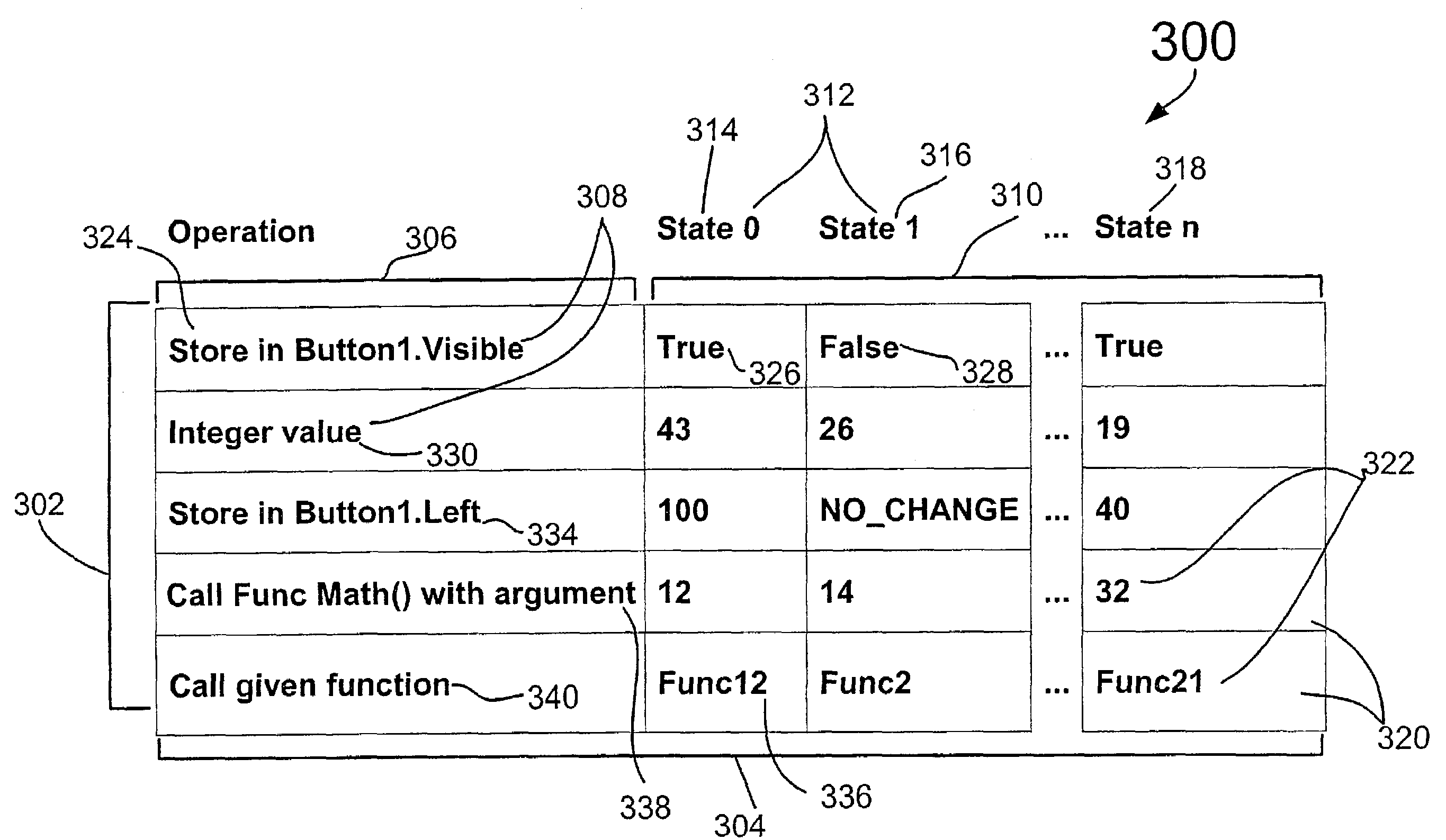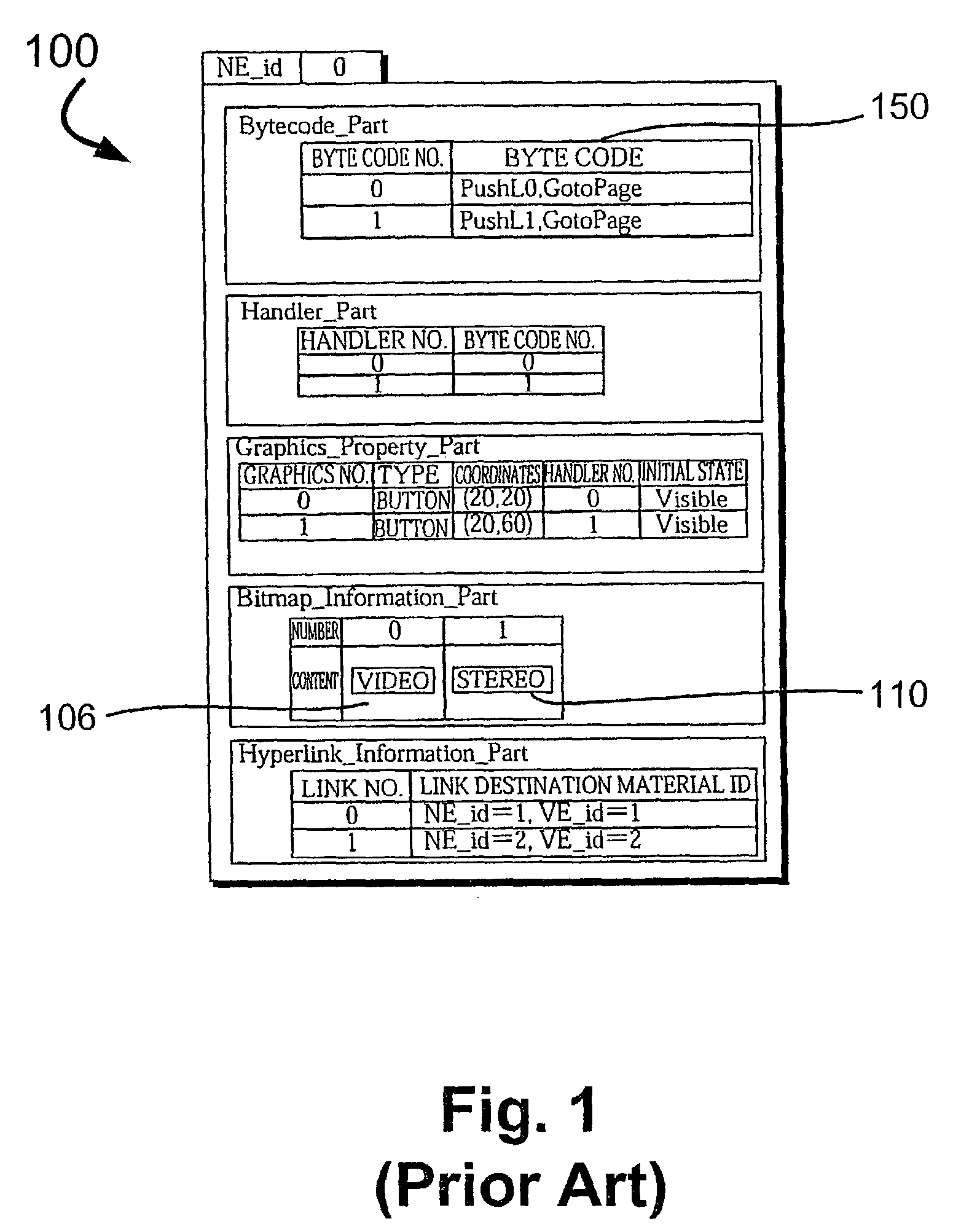Method and system automatic control of graphical computer application appearance and execution
a computer application and automatic control technology, applied in the field of computer software applications, can solve the problems of inability to justify the cost of human capital to develop efficient code, less user-friendly command-driven applications, and less user-friendly applications driven by graphical user interfaces. the effect of efficient control of the operation and the control of the behaviorial functions of the system
- Summary
- Abstract
- Description
- Claims
- Application Information
AI Technical Summary
Benefits of technology
Problems solved by technology
Method used
Image
Examples
Embodiment Construction
[0036]Embodiments of the present invention provide a method and system for controlling computer system operation in response to state changes in the computer system. At least one state table is created, and the state table has a first dimension and a second dimension. At least one programming element is listed along the first dimension and a plurality of states of the computer system are listed along the second dimension. At each intersection of the first dimension and the second dimension is a cell in which an operand is specified for the programming element at each state. For each state change of the computer system, each programming element listed along the first dimension is executed according to the operand listed for a current state.
[0037]FIG. 3 shows a state table 300 according to an embodiment of the present invention. The state table 300 has five rows 302 and n+2 columns 304. The first column 306 is a list of operations or programming elements 308. As a result, it will be a...
PUM
 Login to View More
Login to View More Abstract
Description
Claims
Application Information
 Login to View More
Login to View More - R&D
- Intellectual Property
- Life Sciences
- Materials
- Tech Scout
- Unparalleled Data Quality
- Higher Quality Content
- 60% Fewer Hallucinations
Browse by: Latest US Patents, China's latest patents, Technical Efficacy Thesaurus, Application Domain, Technology Topic, Popular Technical Reports.
© 2025 PatSnap. All rights reserved.Legal|Privacy policy|Modern Slavery Act Transparency Statement|Sitemap|About US| Contact US: help@patsnap.com



